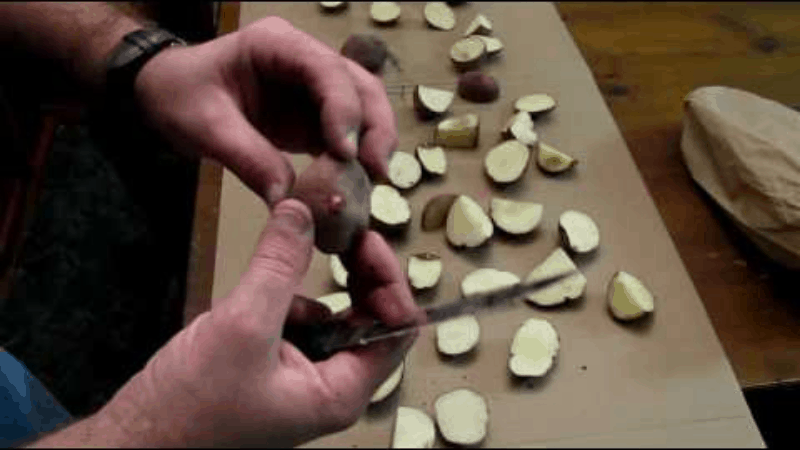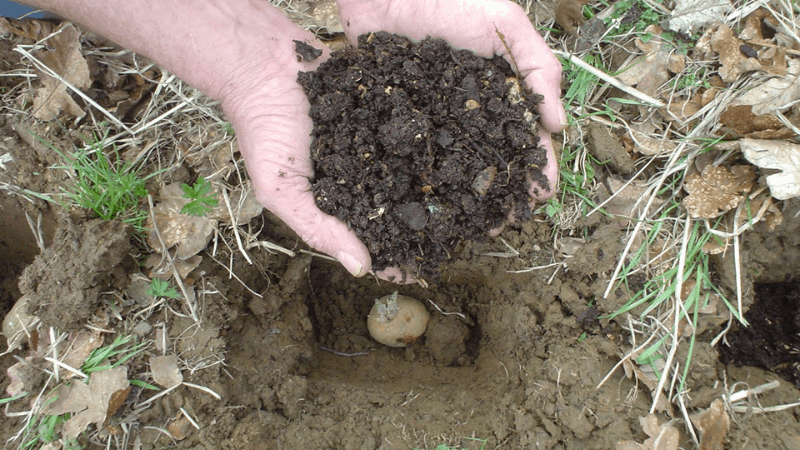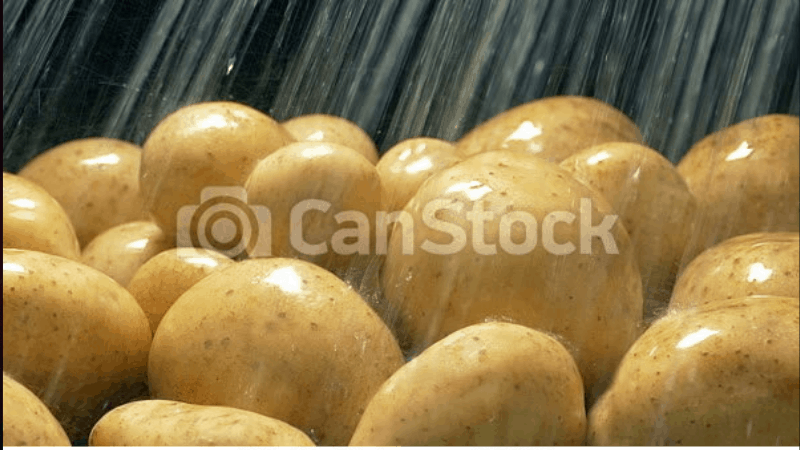How to Grow Potatoes with Vegetative Propagation
by Lee Safin
Vegetative Propagation means using plant parts such as roots or stems for growing more plants rather than waiting for seedlings to appear first. Potatoes are a staple in many households around the world, and if you want to grow them yourself, it’s easy!
How to Grow Potatoes with Vegetative Propagation? It will take seven simple steps to reach your destination.
- Cutting The Small Eyes
- Moistening the Wond
- Planting the Potatoes
- Protect The Potatoes
- Wait For The Time To Harvest
- Irrigate The Potatoes Properly
- Keep The Spoilers Away
These are the seven steps to grow potatoes with vegetative propagation.
However, potatoes will grow from “eyes” on stalks that sprout from the main stem. The first step is to cut off one of these eyes and plant it with some soil near your house or garden. Just make sure there is enough space for potatoes to grow without crowding each other out. You can use any type of potato seed or tuber as long as they have been stored properly (cool/dry place).
Contents
- How to Grow Potatoes with Vegetative Propagation
- Step One – Cut one of The Small Eyes
- Step Two – Keep The Cut Area Moist
- Step Three – Dig A Hole And Plant Your Potatoes
- Step Four – Spray Lightly with Water and Cover with Newspaper
- Step Five – Harvest Your Potatoes When Ready
- Step Six – Water Your Potato The First Time You Sprinkle It With H2O
- Step Seven – Provide Proper Protection From Spoilers
- How To Avoid Stunting Of Your Potatoes After A Cold Spell
- What Are Some Things I Should do After Harvesting My Potatoes?
- What Are The Disadvantages of Growing Potatoes With Vegetative Propagation?
- Wrapping Up
How to Grow Potatoes with Vegetative Propagation

There are many different ways to grow potatoes, but the easiest way is vegetative Propagation. How can you do this?
Step One – Cut one of The Small Eyes

The first step in growing your own potatoes is cutting off one of the small eyes that sprouts from the main stem. You’ll then plant it with some soil near your house or garden. You should make sure there’s enough space for potatoes to grow without crowding each other out!
Step Two – Keep The Cut Area Moist
Next, cover the cut area with a damp cloth or paper towel and keep it moist. It’s important to make sure that these potatoes have enough water because if they dry out, then you’ll lose them! You can also use soil sprayed with water as long as there is no sunlight shining on it, so the potatoes don’t grow leaves instead of roots. Ideally, you should do this for one month but sometimes longer depending on how fast your potatoes are growing.
Step Three – Dig A Hole And Plant Your Potatoes

Prepare your planting area by digging a shallow hole with at least six inches of depth. Place the seed potato in this hole, making sure that you cover it up to its eyes (the little bit sticking out) with soil or potting mix, then fill around it again with more soil until there are no gaps remaining. If necessary, use some water on your hands to help press down any loose dirt so that everything is nice and compacted together- be careful not to smash too hard, though!
If the potatoes are producing leaves instead of roots, then it is advised that you use the water-soaked newspaper around the base of the stem until new root growth starts (usually within a week).
Step Four – Spray Lightly with Water and Cover with Newspaper

This step could be done daily if needed. Spray water on the leaves of your plant and cover it with a layer or two of the newspaper. This will help to keep moisture in the ground and provide protection from the wind while also retaining heat, increasing sun exposure (if needed). The potatoes should be harvested within five months for the best results!
Step Five – Harvest Your Potatoes When Ready
When harvesting time comes, simply remove any potato that has reached maturity by gently tugging at them until they come out without damaging too many nearby plants. By now, you may have noticed some other new growth emerging around where you planted your previous crops. You should use these as planting material in future steps! Planting this way can lead to double crop yields!
Step Six – Water Your Potato The First Time You Sprinkle It With H2O
The first time you sprinkle water over your potatoes should take place two to three weeks after planting. The amount of water you use should be enough to moisten the soil but not enough to make it muddy, which will discourage growth but don’t forget this step!
Step Seven – Provide Proper Protection From Spoilers
The plants need protection from any potential spoilers that could harm them, such as birds or insects, so consider using a scarecrow or other deterrents if needed. Keep in mind your potatoes may become stunted during very cold spells with no insulation; in these cases, start up some extra heat sources around them for some added warmth (but never too close).
How To Avoid Stunting Of Your Potatoes After A Cold Spell
If you want to avoid the stunting of your potatoes after a cold spell, the best thing that you can do is to provide them with extra protection. You should make sure they are well insulated and have some form of heat source nearby.
However, it’s important not to put any heat sources too close as this could damage or even kill your plants.
It may seem like an obvious step but often times many people forget about keeping their potatoes warm enough during colder spells which will result in stunted growth due to lack of insulation; for instance, coverings such as straw work well!
If possible, add some supplemental heating if needed (but never too close).
What Are Some Things I Should do After Harvesting My Potatoes?
If you want to ensure that your harvest will last for many months before spoiling, then it’s important that you handle them correctly! One good trick is dipping each potato in cold water and then storing them in a dark, dry place.
You’ll want to air out your potatoes every few weeks or so if possible; this will not only keep the area around your potatoes free of spores but also encourages better growth!
What Are The Disadvantages of Growing Potatoes With Vegetative Propagation?
Space Demanding Attitude
Vegetative Propagation of potatoes requires more space as the growing process is not limited to a container.
Too Much Time Consuming
It takes time for transplants from vegetative Propagation to become established in a field or garden, which means less yield per acre than seed potato production. Potatoes planted by vegetative reproduction take longer.
Sometimes it can take up to six months longer to mature when compared with plants propagated using seeds harvested from other potatoes. This could mean a reduced harvest if you are planting for a specific date.
Low Resistant Properties
Potatoes grown with vegetative replication are less resistant to disease and pests because they have mixed genetic material. This can lead to them being susceptible to late blight (Phytophthora infestans), an economically devastating fungus that can destroy entire crops or regions.
It May Not Give As Much You Expected
The tubers are grown via vegetative Propagation also tend to be smaller than those obtained by seed production, which may affect the variety of potatoes that you can produce in your garden or field because they cannot grow as large and must therefore bear more growths per pound when planted.
A potato plant propagated from cuttings taken during its growing cycle will bear roots much quicker than one started with seeds: this is especially true if you are using only parts of the parent (such as just leaves), but it holds true even if all four limbs have been severed.
Wrapping Up
How to Grow Potatoes with Vegetative Propagation If you’re looking for a way to grow potatoes without having any space in your garden, then vegetative Propagation is the perfect solution.
Be sure that there’s plenty of space where you plan on planting them, so they don’t get crowded out by other plants or vegetables. The small eyes will sprout and produce more potatoes that could be harvested!
Check out this blog post if you want to learn more about how it works and what steps are needed when growing new potatoes using this method. We hope these tips help make gardening even easier for everyone who loves harvesting fresh fruits from their own backyard!
 |
 |
 |
 |

About Lee Safin
Lee Safin was born near Sacramento, California on a prune growing farm. His parents were immigrants from Russia who had fled the Bolshevik Revolution. They were determined to give their children a better life than they had known. Education was the key for Lee and his siblings, so they could make their own way in the world. Lee attended five universities, where he studied plant sciences and soil technologies. He also has many years of experience in the U.S. Department of Agriculture as a commercial fertilizer formulator.
Thoughts on "How to Grow Potatoes with Vegetative Propagation"
 |
 |
 |
 |
Get FREE Gardening Gifts now. Or latest free toolsets from our best collections.
Disable Ad block to get all the secrets. Once done, hit any button below
 |
 |
 |
 |